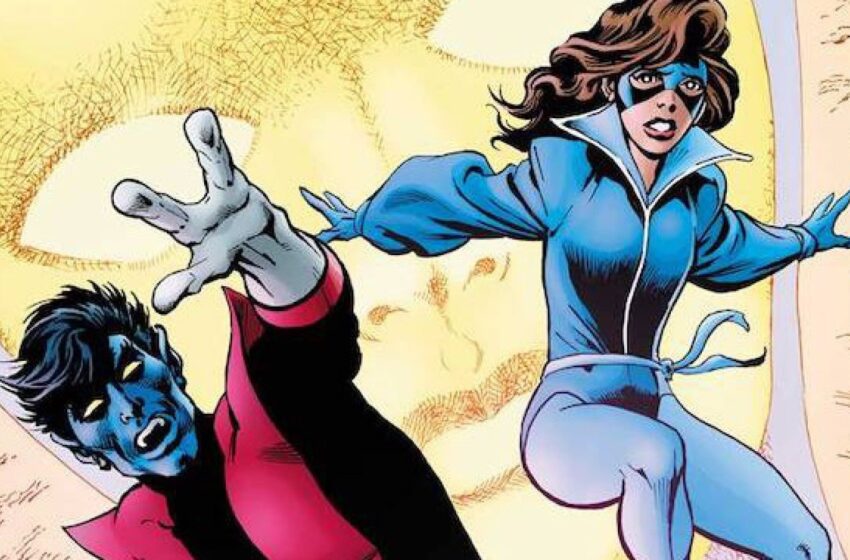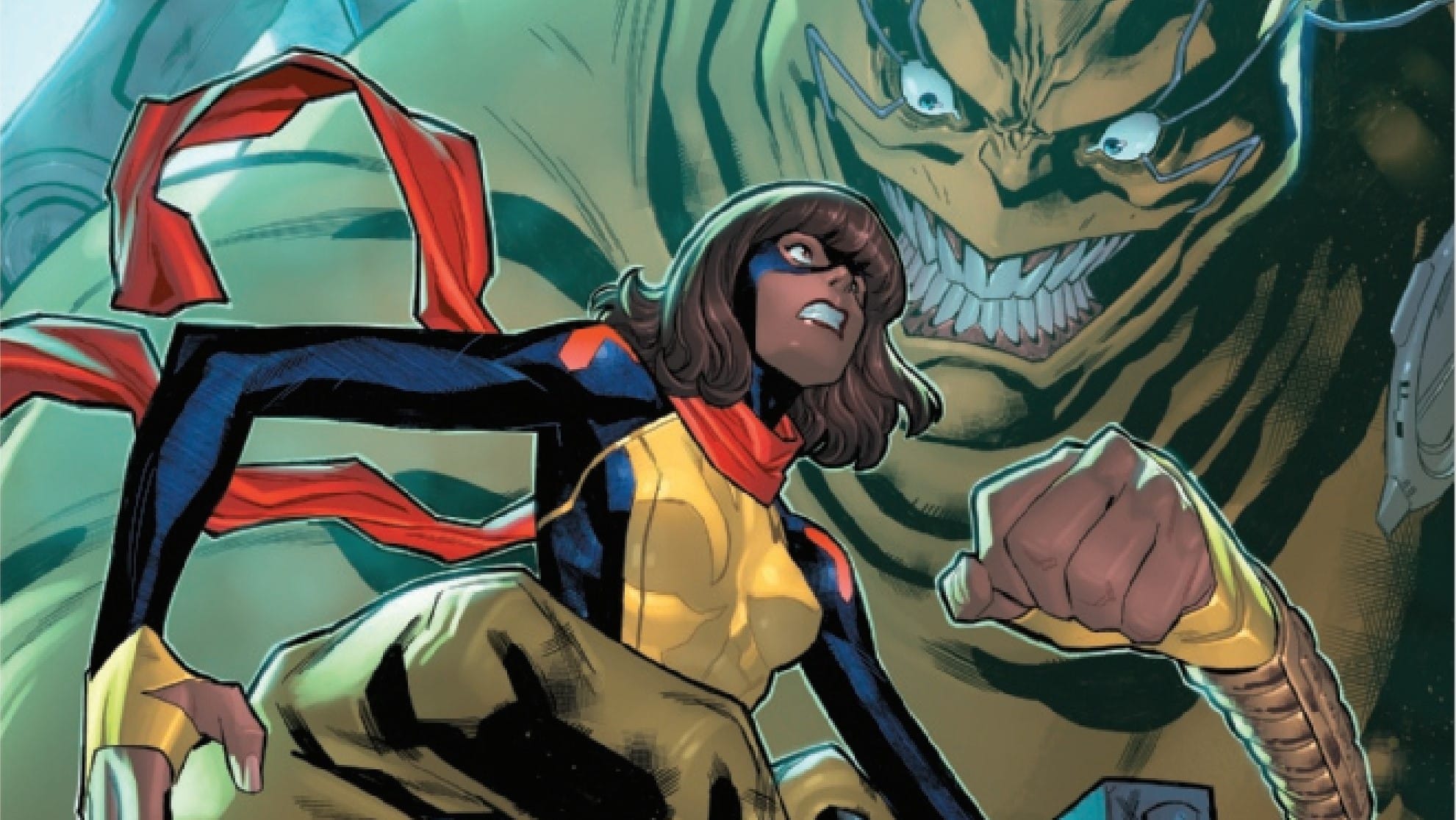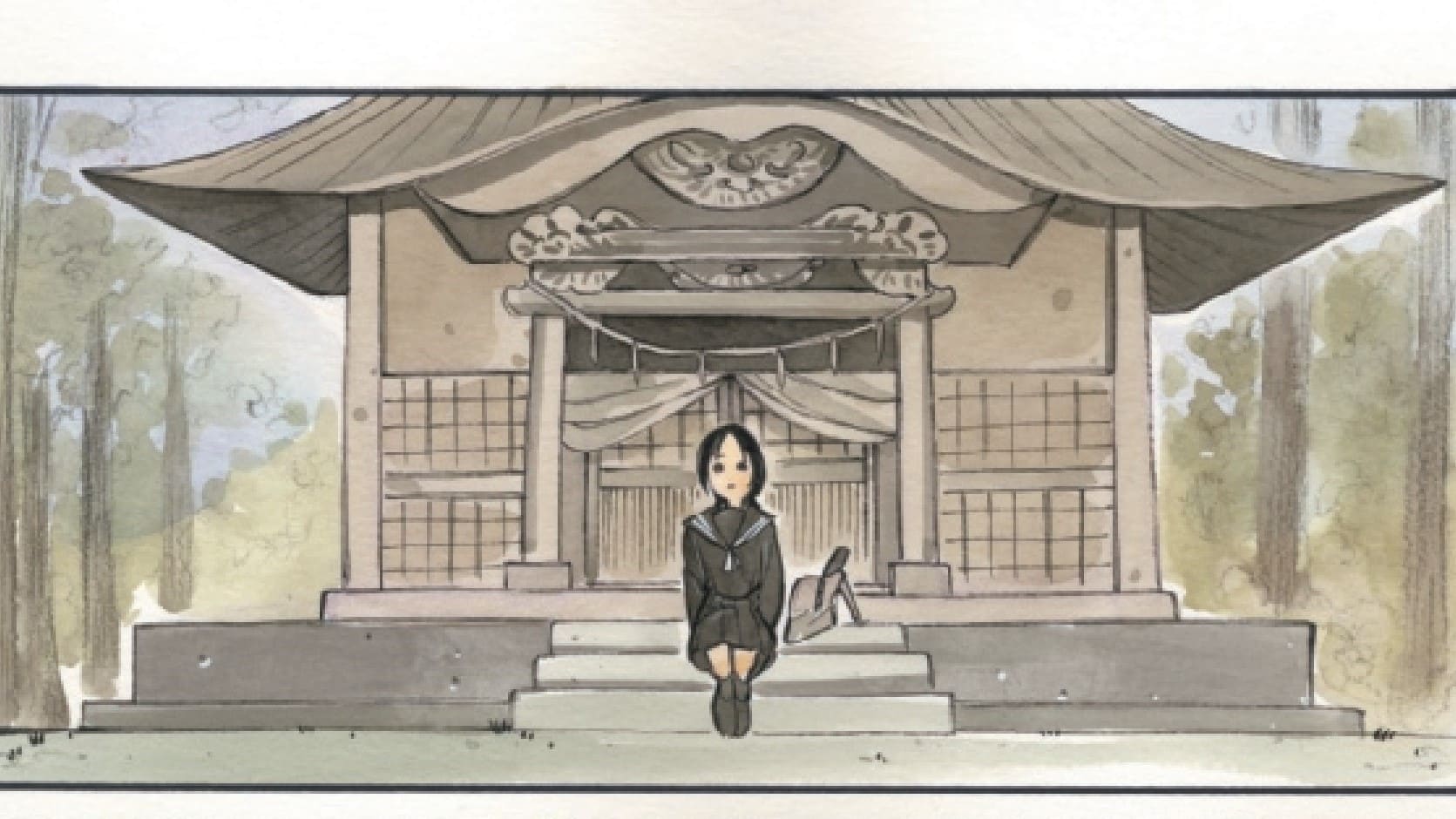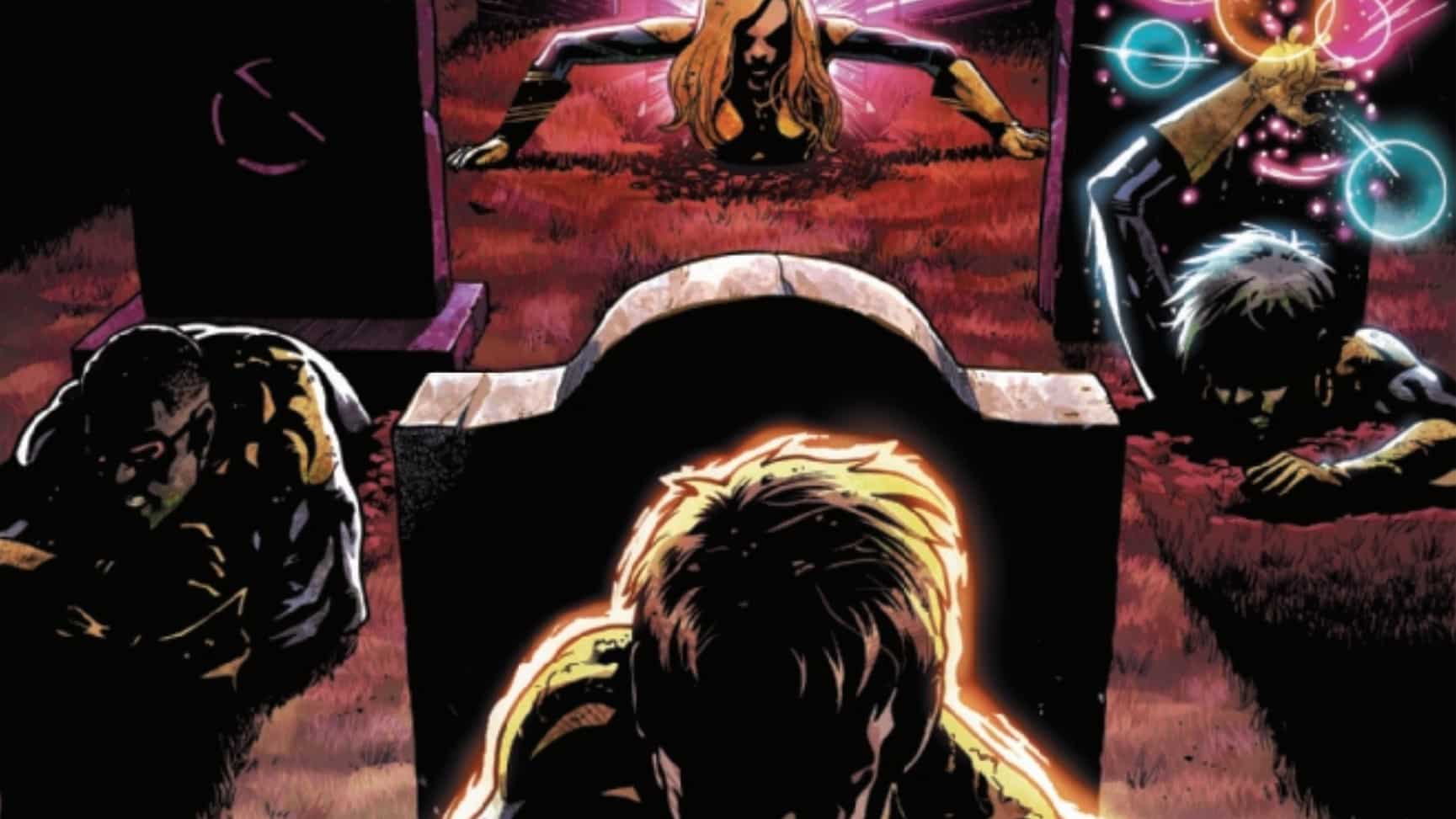Hurt badly in an earlier crossover event, Kate Pryde and Kurt Wagner missed out on “Fall of the Mutants,” believing the rest of their first team, the X-Men, deceased. Instead, the duo remained on Muir Isle, in no shape to fight … until they began the new super-team Excalibur. What happened to Kurt and Kate in between teams? And who are all those people in khakis with guns? Don’t they belong in a Wolverine story? X-Men Legends #12 is written by Poppa Chris Claremont, penciled by Scot Eaton, inked by Lorenzo Ruggiero, colored by Rachelle Rosenberg and lettered by Joe Caramagna.
Anna Peppard: Nostalgia is one of those things — like escapism or romance or sex — that’s only deceptively simple. Some people say nostalgia is bad because it’s regressive and manipulative, a rose-colored transformation of the past into something impossibly perfect, which compels us to reject the complications of adulthood in favor of fantasizing about the (supposed) innocence of childhood.
Stephanie Burt: Who says I can’t reject the complications of adulthood? My default state is phased.
More seriously — or rather just as seriously — some of us grew up not just with, but as, these characters. We understand ourselves through them. Why would we not want to return to them in order to learn how we came to be who we are, and what we can do?
Anna: Exactly! That’s another way of looking at nostalgia. Depending on what we’re nostalgic for, nostalgia can resist narratives of normalization and let us play in the fluidity of youth. Bringing the imagined past into the present can also be an invitation to reflect on how we’ve imagined the past and why.
Serialized superhero comics are often accused of being the bad kind of nostalgia. A comic like X-Men Legends #12, which is steeped in continuity and can’t change a future that’s already written, certainly risks regressiveness. Yet this comic can also prompt the more reflective type of nostalgia. Serialized superhero comics bend time, and so do comics in general, as a form where past, present and future exist simultaneously on any given page. There’s also a larger context to consider. Chris Claremont, the increasingly mythologized impresario of the X-Men’s golden years, revisiting Excalibur, the cultishly popular series he co-created with Alan Davis, doesn’t have to be reflective to encourage reflection.
Stephanie: That said, the last time Claremont wrote an interstitial story set during his classic run — New Mutants: War Children (2019), with classic throwback Bill Sienkiewicz art — the story came out both nostalgic and reflective: That comic created an executive summary of so many things that made New Mutants great, almost a reading guide for the older stories, with just as many not-quite-textual guides for shippers. I’m coming into this comic with my nostalgia-fueled expectations absurdly high.
Anna: To some extent, the success or failure of this comic depends on whether you enjoy its reflections on the past, and whether you enjoy the experience of reflecting on those reflections. So let’s get to reflecting!
Highway 1 to Bamf

Anna: If you’re reading this review, you probably recall the general context for this story. But just in case, here are the basics. Kitty and Kurt were gravely wounded during the “Mutant Massacre” of 1986, meaning they missed 1987-88’s “Fall of the Mutants,” which they spent recovering on Muir Island. In Excalibur Special Edition #1, more commonly known as “The Sword is Drawn,” released later in ’88, Kitty and Kurt are still struggling mightily with their grief and physical limitations. Kitty cries desperate, angry tears while clutching a photo album of her dead friends. Kurt almost gets himself killed in a training simulator. Kitty accuses him of wanting to share the X-Men’s fate. Kurt doesn’t deny it, and even kind of admits it in a later fight with Brian Braddock/Captain Britain.
Also relevant: During this era, Mystique was working for the government-sanctioned team Freedom Force, and Kurt didn’t yet know Mystique was his mom. And the Harriers are here! But they don’t really matter. The Harriers are G.I. Joe rip-offs who appeared in exactly two Claremont-penned comics between 1989-90 before disappearing from the Marvel Universe for 32 years. Then and now, they exist to have cool names and give the heroes someone to fight. In this comic, they’re guarding Forge’s ritzy chalet from Mystique, who is out to kill Forge because she blames him for the death of Rogue (It’s a “Fall of the Mutants” thing, you had to be there).
Stephanie: Forge blames himself for a lot of things, too (For example, he de-powered Storm). By the end I realized we were reading a Forge comic just as much as we were reading a Kurt and Kitty comic. I might be getting ahead of myself, but I think this comic links up with “The Sword Is Drawn” — and with X-Men vs. Fantastic Four (1987), the immediate previous Kitty adventure! — in that we’re watching several once-heroic characters deal with, to put it calmly, suicidality. They defined themselves as heroes and they think they can’t be heroes anymore: They think they’re burdens, or sinful, or both, and have almost no will to live.
Am I making heavy weather out of a relatively light interstitial nostalgia-driven story? Perhaps I am. Maybe that’s what I do. (Maybe that’s what great Claremont stories encourage.)
Anna: This present story about the past opens with Kitty, Kurt and Lockheed being mysteriously teleported off Muir Island to the vicinity of the chalet, where a spectral version of Destiny explains the plot. Destiny says she can’t stop Mystique from killing Forge. But Nightcrawler can — and must. It’s interesting that Destiny specifically places this burden on Kurt. Presumably, Destiny knows he’s Mystique’s son. Because Claremont is writing this, Destiny also presumably knows her own connection to Kurt. As you may have heard, Claremont’s original intent was to have Nightcrawler be the offspring of Mystique and Destiny. He wasn’t allowed to do it, and so, many years later, we got “The Draco.” Claremont’s clearly not over this idea and shouldn’t be, because it’s so much better than making Nightcrawler the son of a demon. The last time Claremont revisited Excalibur, in the fittingly titled story “Demon’s Choice” from Marvel Comics Presents #5 (2019), an alternate version of Destiny strokes Kurt’s cheek and calls him her son. Keep fighting the good fight, Chris!
Stephanie: Poppa Claremont famously doesn’t keep up with current X-continuity, or at least he didn’t till recently, but he sure keeps up with his own work: Kurt quotes Kitty saying “Easy peasy” both in “Demon’s Choice” and in this new story. And yes, reminding fans on every occasion that Kurt is and should be the child of Destiny (womb-haver) and Mystique (shape-shifting small-gamete maker) definitely counts as fighting the good fight.
Anna: A few things stood out to me about this setup, and they all relate to clothes. Kurt is dressed in the same white training outfit he wears during several Excalibur scenes, at least two of which are iconic. I appreciated this callback because a) both of the iconic scenes in question involve interesting encounters in the gymnasium with Meggan and b) it’s currently been three years of publishing time since we’ve seen Kurt in casual clothes. This is a bugaboo of mine because clothes are important to Kurt; he’s often used clothes to express his identity and emphasize his humanity, and casual clothes are particularly important to the latter. I miss Kurt in a T-shirt and jeans (not to mention his Excalibur-era sexy pajamas).
Kitty, meanwhile, who is either 14 or 15 years old in this comic depending on which birthdays count, is wearing fuzzy bunny slippers and a long pink nightgown. This outfit is also inspired by canon; Kitty is wearing this nightgown at Kurt’s bedside when he wakes from his coma and she tells him about the death of the X-Men. But this outfit also emphasizes Kitty’s youth, which is relevant to a conversation she has with Kurt about heroism (more on that in a bit). Kitty and Kurt are offered their superhero costumes. Kurt dons his, but Kitty refuses, saying she nearly died in her costume and never wants to wear it again.
Stephanie: She nearly died twice: once in the Mutant Massacre and once in Latveria, in X-Men v. FF no. 3, when she decided that she was too much of a burden on other people and she should just let herself dissipate into oblivion. It’s one of the most effective depictions of suicidal ideation I’ve ever seen, and one of the most beautiful, and it wrings the hell out of me every time I reread it, and the only reason she doesn’t die then and there is Franklin Richards, who wants her to stick around so she can play with him.
Kitty’s not only returning to what she wore before she became a superhero, she’s asking for a kind of do-over. And, maybe, for a new bedroom. She’s separated from her former roommate, Illyana Rasputina — the sleepwear invokes their shared life in earlier issues — and she has yet to join Rachel, who’s on her way.
Anna: With his hands on Kitty’s much-lower shoulders, Kurt reminds Kitty, in clear, calm language, about their heroic purpose. Says Kurt: “We are heroes, Katherine — like our friends. If their sacrifice is to have any meaning … we must hold tight to those same ideals.” This sounds like most versions of Kurt, except in “The Sword is Drawn,” it’s Kitty who’s responsible for reminding Kurt of their heroic purpose, and I liked that better, because a young girl telling a grown man how to be a hero is more interesting to me than a grown man saying the same thing to a young girl. Kitty yelling at Kurt in “The Sword is Drawn,” basically telling him to “grow up,” was exciting because it inverted expectations. The current scene feels less complex in that regard.
Stephanie: Kitty and Kurt support each other. I’m OK with that. It’s mutuality. Just a couple of pages later, Kurt treats Kitty like a damsel in distress — or like a severely wounded comrade, which isn’t inaccurate — and Kitty talks back: “Gimme a break. Both of us nearly died fighting the Marauders. … We do this together.” They clasp hands, they’re both seen in profile, and they’re nearly at the same level (though Kurt is taller and slightly closer to us). It’s good.
Also good: Lockheed. We see a LOT of him. It’s as if Kitty can barely get by without him, which — if you know anyone with a serious disability and a companion animal — might make sense to you, too.
A Harrier Situation

Anna: Kitty and Kurt are quickly attacked by the Harriers, who assume they’re after Forge. To escape, Kurt teleports himself and Kitty. I hate being that guy who’s overly hung up on superhero fight mechanics, but this bugs me a little, since at this time in continuity, Kurt’s teleportation should be far more limited. Between “The Sword is Drawn” and his powers being fully restored in Excalibur #37 (1991), Kurt nearly dies on multiple occasions because he can only teleport once a day and can barely stand after a single ’port. That weakness is addressed here, in Kurt’s thought bubbles (remember thought bubbles??), in images of him clutching his side, and when he eventually collapses from the strain of multiple ’ports. But for me, his ability to overcome his limitations through force of will makes for a less complex (there’s that word again) disability narrative than those earlier stories offered.
Stephanie: I defer to you on Kurt’s power mechanics, but at least he admits he’s overextending himself. Maybe he’s just having a day with more spoons than usual.
I miss thought bubbles. Hey, speaking of changing narration in comics, the words in the yellow boxes come from a third-person narrator, with opinions! “And with those words, Destiny’s image fades away, leaving Kurt and Kitty alone in the evening twilight.” Much as I dig the way modern comics put characters’ thoughts into narrative boxes instead, thought balloons allow more space for third-person narration. Which I also like.
Anna: Some implications of Kitty’s faulty powers are more directly explored. We see her sinking into the ground when she’s hurt and floating inside Kurt when she’s unconscious. There’s also a weird thing where she merges with Lockheed that I’ll let Stephanie tackle. But it would have been nice to see some of this from Kitty’s perspective. Kurt’s perspective is foregrounded throughout this comic. Claremont goes all in on those famous thought bubbles of his, and there’s even an editor’s note to remind us Kurt’s actually thinking in German — just in case we forgot he’s German, I guess? (Another odd choice in a comic explicitly addressing longtime fans.) While the world knows Kurt’s my guy, I can’t help thinking this story might be more interesting — and more faithful to the era at hand — if it foregrounded Kitty fighting for Kurt.
Stephanie: So much in “The Sword Is Drawn” uses Kitty’s point of view: I’m OK with the choice here to focus on Kurt. Speaking of focus, can we talk about the art? I don’t know how this artist ended up with Poppa Chris, but I think it’s a good match: flattering, curve-oriented, perspective-using realism (or “realism,” since it still looks like a cape comic). Like Todd Nauck on Claremont’s Nightcrawler solo, Scot Eaton understands what made Alan Davis great, without exactly trying to ape him. And he draws expressive faces: despair, determination, confusion, relief — I see it in these people’s eyes.
Warhawk from the Harriers uses some sort of electric ranged weapon to take Lockheed down, and Kitty — I think — simply feels it: She’s got a psychic bond with Lockheed in the way that she bonds with Illyana. I think what happened is that Lockheed gets hurt bad, makes physical contact with Kitty, leads Kitty to panic, and then she phases in a way that temporarily renders Lockheed immaterial, too. I will admit that I got a bit confused, but I found the images beautiful. They emphasize that interspecies bond.
Anna: I think you got more out of Eaton’s art than I did, but I was very fond of the first panel where Kurt teleports with Kitty. That panel does great work communicating Kitty and Kurt’s trust and desperation, which is in turn informed by the larger context, in which they believe most of their found family is dead. As someone who still feels Kitty and Kurt’s pain all these years later, this hug was good stuff. Throughout, Eaton also inserts what I took as homages to other Nightcrawler artists. I spotted swipes from Alan Davis and Ed McGuinness — let us know if you find more!
What did you make of Kitty’s role here, Stephanie? More importantly: Who’s your favorite Harrier?
Stephanie: That would be Bobbi Chase, not only because she’s a badass who doesn’t rely overmuch on superweapons, but because she appears to have been named — back in 1990 — for actual Marvel editor Barbara “Bobbi” Chase (not to be confused with Bobbi Morse, Mockingbird). There’s another Claremont trademark for you: minor characters named for real people he knew.
Kitty acts like a damsel in distress for a while, literally almost fainting, getting all horizontal and floaty, and letting Kurt do his solo hero act to save her. Then she gets better. One oversize panel gives us our Shadowcat, awake and alert with her hurt dragon in one arm, while she sticks the other arm into a big dude’s torso. It’s the usual Kitty bluff, which no one ever calls: “surrender or I’ll materialize inside you.”
Do we have to talk about the Harriers? They are very silly. (But they introduce a very serious topic: “suicide by cop.”)
The Masculine Mystique

Anna: Kitty finally steps in to rescue Kurt from Forge, but it’s not Forge. In a twist we all saw coming, the Forge pointing a gun at our heroes is actually Mystique. Kurt makes a speech about the toll of vengeance, wherein he invokes Mystique’s love for Destiny. I like knowing that Kurt knows they’re lovers (which is how I’m choosing to read this and you can’t stop me). Then Kurt finally collapses from all the teleporting he shouldn’t have been able to do, and Mystique … cradles him in her arms?
This scene is tough for me because of course I want to see Kurt and his blue mom hug it out. But it’s profoundly out of character for Mystique. I am wracking my brain for a single other example of 616 Mystique touching Kurt in a nonviolent way, let alone a tender one. I guess there are a couple of panels of Mystique holding Kurt as a baby, but all of those precede her hurling baby Kurt over a waterfall. The dialogue attempts to address the OOC-ness of the moment, with Mystique talking about how she’s changed, and doesn’t know how she feels about it, yadda yadda yadda. But I’m not sure I buy it. With 21st century Claremont stories, you often find yourself wondering about motivations — is he saying this is how he would have written these relationships had he gotten to keep writing them?
Stephanie: I think he is. I think you can No-Prize this one by saying Mystique is a volatile, unstable, sometimes vengeful, sometimes would-be-tender character, and that she’s shaken up by her belief that she’s lost Rogue. Other than “doesn’t care how many baseline humans she kills” and “will forever love Destiny,” I can’t think of characteristics that hold for Mystique through her 40-year existence as a Marvel character (though of course that existence takes in many post-Claremont writers, from Seanan McGuire to Scott Lobdell to Brian K. Vaughan).
Wait, I’ve got it. Mystique doesn’t mean that she’s already changed: We see the change, right here, right now. This moment does it. And not long after this story takes place comes Uncanny #255, when Destiny dies and Mystique’s whole personality takes a turn again. Claremont is showing us a Mystique who could have been, one who could have made the same choice Rogue made much earlier in her own life. That said, the body language Mystique uses does shift with a really head-spinning abruptness, from pointing a loaded gun at her son to cradling him in her arms.
Claremont’s also showing us what Forge wants and how Forge has changed. Like Kitty not long before, he began the story in a place where he’d rather be dead. He expected Mystique to show up with assassins and strike him dead, and he practically welcomed it: Both Raven and Forge saw themselves as players in a revenge tragedy whose outcome they knew. But exposed to Destiny’s predictions and Kurt and Kitty’s heroism and (apparently) the government-sponsored derring-do of Freedom Force, they all change their minds. Revenge is stupid, and turning other people into your preferred means of self-harm is stupider still. I would say that Forge has learned his lesson, but I’ve read too many Forge stories to believe that.
Anna: I’m on board with your massaging of the Kurt and Mystique scene. I want reasons to like it! But I’m not sure if I can be convinced to like the bargain Mystique makes with Forge to “fix” Kitty and Kurt’s powers. It made me yearn for the story I foolishly hoped this might be — about Kitty and Kurt reckoning in realistic, identifiable ways with their newfound disabilities, and growing as friends through that journey. Maybe this is just my nostalgia for the older stories getting in the way.
Thoughts on the conclusion, Stephanie?
Stephanie: I think the last page in this comic looks forward to the story you want to see, which Claremont perhaps even tells in “The Sword Is Drawn” (and then again in New Excalibur when Nocturne has her stroke). It’s a beautiful page. I believe in this Kurt and this Kitty, even if I don’t quite believe in this too-good-to-be-true, we-know-it-won’t-last face-turn Mystique.
It’s not fair to compare this issue to the highlights of Claremont’s classic run, or even to the short-run triumphs of his early-2000s return to Marvel, like Mekanix or New Excalibur, where he had room to plan and breathe and make new continuity. The right comparisons have to be his other recent interstitials, like Marvel Comics Presents #5 and New Mutants: War Children, and this one’s … fun and full of heart but not quite as good? The art measures up! And the main X-characters do, too, but Hardcase and the Harriers are just not that interesting and never will be. And oh boy are there a lot of them.
Anna: Is there stuff that bugs me about this comic? Sure. Do I think there are missed opportunities? Absolutely. Do I think it’s objectively “good”? Not exactly. But I enjoyed it nonetheless.
Stephanie: You and I end up in the same place. I even had a vision of Rachel. Just like Kitty at the end. That last page looks so good. And that’s nostalgia. There’s even a Phoenix sunrise. (Also, since we’ve been talking Claremont so copiously, I want to reiterate that I like the art a lot. Kitty and Kurt and Lockheed look beautiful and vulnerable and expressive and right.)
Anna: Above, I suggested my nostalgia is partly responsible for my gripes. But it’s also responsible for my joy. This comic book starred my friends, and I love those friends enough to forgive them for feeling a little trope-y and out of character. Maybe it’s silly to like a silly comic just because it reminds you of the past. But some stories are a part of you, and you can no more separate yourself from them than Kitty Pryde can separate herself from Lockheed when their human and dragon consciousnesses accidentally merge for reasons I still don’t really understand.
Stephanie: They merge because Kitty’s been primed to merge with her soulmate since the era when that soulmate was also her magical roommate. Do I get a No-Prize?
Anna: If I had the power to award No-Prizes, that empty envelope would absolutely be on its way.
X-Traneous Thoughts
- Forge’s outfit is also a callback, although the shirt and shorts should definitely be tighter. (Anna, is that even possible? He’s already bulging out of them.)
- Mystique’s line about, “Next time, Kurt, you can save me,” is either cloying or a reference to X-Men Unlimited #4 (1994), aka the comic where we finally (finally) learn Mystique is Kurt’s biological parent. She sets off a bomb at the funeral of a guy she killed knowing Kurt will break his cover to teleport her to safety, which of course he does.
- “I’ve been having these weird dreams about Rachel,” says Kitty. “Wonder what they mean?” Is this some of that Claremontian subtext I hear so much about? (Anna, I just sprayed my drink all over the table.)
- The final silhouette panel is simple but effective, with the sunrise that could also be a sunset, evoking a comforting timelessness.
- I guess Kurt’s sling was largely aesthetic, but he’s hardly the first action hero to shake off a busted limb, so I’ll allow it.







